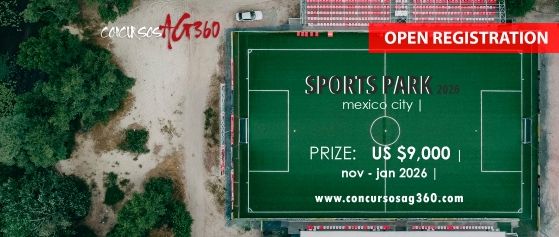[premise]
The acceleration of climate change has amplified the scientific urgency to study Earth’s polar regions. Traditional research stations are often permanent, carbon-intensive structures with significant logistical and environmental footprints. This competition challenges architects and designers to envision the next generation of scientific outposts. We seek a paradigm shift towards a mobile, modular, and sustainable architecture that can be deployed, reconfigured, and removed with minimal impact on the fragile Arctic ecosystem. This new model must prioritize energy self-sufficiency, operational resilience in extreme conditions, and the psychological well-being of researchers living in prolonged isolation, thereby enabling more agile and responsible scientific exploration.
[objective]
The primary objective is to design a fully-functional, modular Arctic research station for a crew of 8 to 12 scientists. The proposed design must be a comprehensive system, not just a building, addressing mobility, energy independence, and waste management. Participants are tasked with developing a robust architectural concept that integrates living quarters, laboratories (both wet and dry labs), communal areas, and utility modules. The final design should demonstrate a deep understanding of polar architecture principles, showcasing innovative solutions for rapid deployment, long-term durability, and a “leave-no-trace” operational lifecycle to support critical research in a changing world.
[site]
The design should not be tailored to one specific location but must be adaptable to various remote Arctic terrains, such as the Greenland ice sheet, the Svalbard archipelago, or the Antarctic plateau. For conceptual purposes, participants can assume a site characterized by permafrost, high-velocity katabatic winds, heavy snow accumulation, and temperatures ranging from -55°C to 5°C. The proposed station footprint should be adaptable, but designs should generally occupy a total enclosed area between 350 and 600 square meters when fully assembled. The system’s foundation must be designed to avoid melting permafrost and allow for leveling on uneven surfaces.
[constraints]
All submitted designs must adhere to strict modularity, with individual units dimensioned for transport via standard ISO shipping containers or heavy-lift aircraft/helicopters. The entire station must be designed for complete energy self-sufficiency, integrating renewable energy sources (e.g., wind turbines, photovoltaics optimized for low light) and advanced battery storage. Material selection is critical; proposals must specify lightweight, highly-insulated composite materials resistant to extreme cold and UV radiation. The design must feature a closed-loop water and waste management system. Furthermore, the structural and foundation system must be engineered for mobility, allowing the entire station to be relocated with minimal on-site deconstruction.
[evaluation criteria]
Submissions will be judged on a holistic basis, with specific emphasis on several key areas. Innovation in modular design and mobility systems will be heavily weighted, focusing on ease of assembly, transport, and adaptability. The sustainability and energy performance strategy, including calculations for energy loads and generation, will be critically assessed. Architectural quality, particularly concerning the creation of comfortable and psychologically supportive interior environments for the crew, is paramount. Finally, the technical feasibility, structural integrity, and overall clarity of the proposal will be crucial factors in the jury’s decision-making process.
[budget]
While there is no fixed construction budget for this conceptual competition, proposals will be evaluated on their projected lifecycle cost-effectiveness. Designs that demonstrate economic efficiency through intelligent use of materials, streamlined logistics, reduced operational energy costs, and durability will be viewed favorably. Participants should include a preliminary cost-benefit analysis that outlines the advantages of their system over traditional, permanent construction in polar environments. The focus is on a feasible and scalable system, where the initial capital investment is justified by long-term operational savings and minimal environmental remediation costs.
-
官方网站/Official Website








